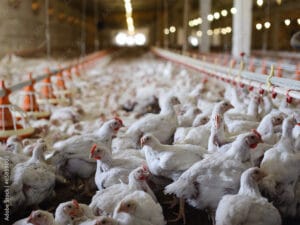Simplify Your Financial Records with Agriculture Accounting Services
Simplify Your Financial Records with Agriculture Accounting Services
Blog Article
Maximize Earnings: The Vital Guide to Food Handling Accountancy
This overview discovers the intricate connection in between price management, labor efficiency, and monetary coverage, giving understandings that can streamline operations and improve decision-making. Secret audit methodologies, coupled with the tactical use of innovation, can change economic efficiency.
Recognizing Food Handling Prices

Raw product costs normally represent the largest section of expenses, requiring mindful administration of sourcing and supply levels. Labor expenses additionally play a vital function, as skilled workers are crucial for maintaining quality and efficiency. Overhead prices, consisting of utilities, lease, and management expenditures, should be kept an eye on to guarantee they do not erode revenue margins.
Understanding these price parts permits food handling services to establish efficient budgeting techniques, optimize resource appropriation, and recognize locations for expense reduction. Ultimately, a comprehensive understanding of food handling expenses is important for informed decision-making and attaining lasting growth within the industry.
Trick Accountancy Principles
Effective monitoring of food handling costs depends on a strong foundation of accounting concepts. These principles offer as the framework for recording, analyzing, and analyzing monetary information, making sure that food processing organizations can precisely assess their productivity and operational performance.
First, the concept of consistency is crucial. It mandates that businesses use the same audit techniques with time, assisting in dependable contrasts of financial declarations. Next off, the matching principle calls for that expenses be taped in the same duration as the earnings they assist create, which is essential for exact profit measurement.
In addition, the cost principle determines that assets ought to be videotaped at their original purchase price, providing a clear basis for depreciation and property valuation. The accrual basis of accountancy additionally plays a significant function, as it identifies revenues and expenses when they are incurred, as opposed to when money adjustments hands. This approach offers a much more practical view of financial health and wellness.
Finally, the preservation concept suggests that potential expenses and obligations must be acknowledged as quickly as they are potential, while revenues should only be recognized when they are assured. By adhering to these vital bookkeeping concepts, food processing firms can boost their economic oversight and critical decision-making.
Financial Coverage Basics
Monetary reporting is crucial for food processing companies, as it supplies a transparent sight of their financial efficiency and position. Timely and exact monetary reports allow administration to make informed choices, making certain the business remains affordable and rewarding in a difficult industry.
Trick elements of financial coverage include the revenue statement, annual report, and cash money flow declaration. The earnings declaration uses insights right into incomes, prices, and web earnings, exposing functional effectiveness. The annual report provides a snapshot of the business's assets, responsibilities, and equity, offering an understanding of economic stability and solvency. The capital declaration tracks the inflow and outflow of cash money, helping organizations manage liquidity properly.
Moreover, adhering to Usually Accepted Accounting Principles (GAAP) or International Financial Coverage Requirements (IFRS) is vital for uniformity and credibility. Routine monetary coverage not just help internal management however additionally meets external obligations to stakeholders, financiers, and regulative bodies.
Inevitably, durable economic reporting is vital for tactical preparation and risk administration, enabling food handling business to browse market variations and exploit on development opportunities effectively.
Cost Control Techniques
Maintaining a strong financial position is not entirely about accurate reporting; it also entails implementing reliable price control approaches (Agriculture accounting). In the food handling market, where margins can be tight, managing costs is vital for optimizing success
One secret method is to perform normal price evaluation. By evaluating the costs linked with raw products, labor, and overhanging, companies can determine areas where financial savings can be attained. Implementing a standard budgeting procedure check enables far better projecting and monitoring of costs, making it possible for prompt modifications to be made.
Another reliable strategy is to work out beneficial terms with vendors. Establishing lasting connections can cause volume price cuts, which straight lower the price of goods marketed. In addition, purchasing employee training can improve performance and decrease waste, adding to overall price efficiency.
Last but not least, taking on lean manufacturing concepts can streamline procedures by eliminating unnecessary actions in the manufacturing process. This not only reduces waste yet also improves top quality and speed. By focusing on these expense control techniques, food processing business can boost their economic performance and make certain sustainable growth in a competitive marketplace.
Leveraging Innovation in Accounting
Embracing innovation in accountancy can significantly enhance performance and accuracy within the food processing industry. By incorporating advanced software application remedies, food cpus can automate repetitive jobs such as supply, payroll, and invoicing tracking. This not only decreases the potential for human error but additionally enables money groups to concentrate on critical decision-making rather than ordinary management responsibilities.
Cloud-based accountancy systems offer real-time access to monetary data, allowing businesses to keep an eye on capital, costs, and success from anywhere - Agriculture accounting. This flexibility is particularly valuable in a dynamic market where expense fluctuations and supply chain difficulties are typical. Additionally, using data analytics tools encourages firms to extract workable understandings from their monetary data, resulting in informed business choices that can drive profitability
Furthermore, leveraging modern technologies like Artificial Knowledge (AI) and Artificial Intelligence (ML) can enhance projecting capacities, permitting better need planning and resource allowance. As regulatory conformity ends up being increasingly complex, modern technology can also aid in guaranteeing adherence to economic reporting standards and food safety and security regulations. Inevitably, investing in technical go innovations in accounting is not just a functional enhancement; it is a strategic requirement for food processing companies aiming to grow in a competitive industry.

Verdict
In conclusion, reliable management of food processing expenses is critical for improving earnings within the sector. Implementing durable price control approaches and leveraging innovation for automation and data analytics further maximize functional effectiveness.
Understanding the costs associated with food handling is important for organizations aiming to maintain profitability and competition in a dynamic sector. Understanding these expense parts allows food processing businesses to establish effective budgeting strategies, maximize resource appropriation, and recognize locations for expense reduction. Ultimately, a thorough understanding of food processing costs is crucial for notified decision-making and achieving sustainable growth within the market.
In navigate here addition, the price concept determines that properties ought to be recorded at their initial purchase cost, giving a clear basis for devaluation and property valuation. By focusing on these expense control approaches, food processing firms can boost their monetary efficiency and make certain lasting growth in a competitive marketplace.
Report this page